Hey ladies! Let’s talk about something that can make a real difference in how you feel, day in and day out. If you’ve been hearing buzz about the DASH diet and are curious what it’s all about, you’re in the right place! Forget those complicated, restrictive fads that leave you feeling deprived. The DASH diet is different. Think of it as a friendly guide to eating well, feeling energized, and giving your body some serious love.
So, grab a cup of tea (or coffee!), get comfy, and let’s dive into what makes the DASH diet a fantastic approach to healthier living, especially for us busy women.
What Exactly is the DASH Diet?
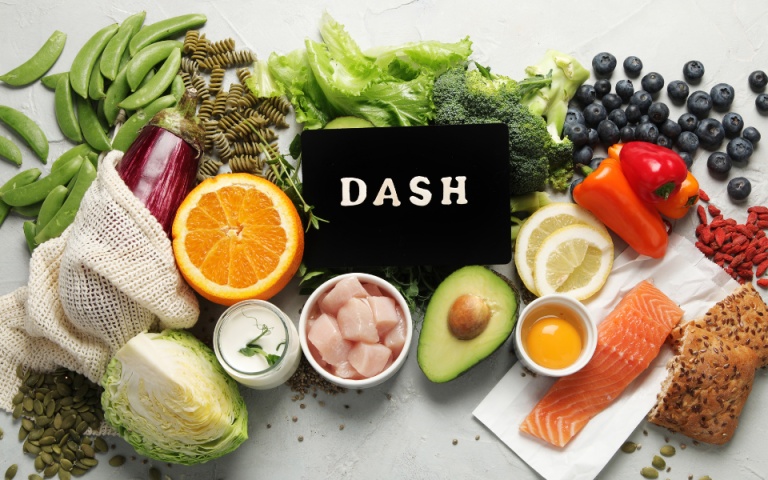
Alright, first things first: “DASH” isn’t just a cool name; it actually stands for Dietary Approaches to Stop Hypertension. Now, don’t let that big word “hypertension” (which is just the medical term for high blood pressure) scare you off. While the DASH diet was originally developed by researchers with a big focus on lowering blood pressure – and it does a fantastic job of that! – it’s turned out to be so much more.
Think of it less as a strict “diet” and more as a sustainable, flexible, and downright delicious way of eating that’s packed with all the good stuff your body craves. It’s not about counting every single calorie or eliminating entire food groups. Instead, it’s about making smart, wholesome choices that add up to big health benefits. It’s a long-term game plan for feeling your best, not a quick, temporary fix.
Why Your Body Will Love the DASH Diet: The Amazing Benefits

So, why should you, as a busy, amazing woman, even consider giving the DASH diet a whirl? Oh, let me count the ways! This isn’t just about one single perk; it’s about a whole cascade of positive changes you might start to notice:
-
Happier Heart, Healthier You: This is a big one. Heart disease is a major concern for women, and the DASH diet is like a superhero for your cardiovascular system. By focusing on heart-friendly foods, it can help lower high blood pressure and reduce bad cholesterol (that LDL stuff) – two major risk factors for heart attacks and strokes. Think of it as giving your heart a big, warm hug from the inside out.
-
More Pep in Your Step: Feeling sluggish and tired way too often? The foods emphasized in the DASH diet – think vibrant fruits, veggies, and whole grains – are packed with nutrients that provide sustained energy. Say goodbye to those mid-afternoon slumps and hello to feeling more consistently vibrant and ready to tackle your day.
-
Weight Management (the Healthy Way!): While the DASH diet isn’t primarily a weight-loss diet, many women find that when they focus on eating these wholesome, satisfying foods, shedding a few pounds can be a natural and welcome side effect. Because it’s rich in fiber and protein, it helps you feel fuller for longer, making it easier to resist those less-healthy cravings. It’s about nourishing your body, and when you do that, a healthier weight often follows.
-
Stronger Bones: For women, especially as we age, bone health is super important. The DASH diet encourages low-fat dairy products, which are excellent sources of calcium and vitamin D – key players in keeping your bones strong and resilient.
-
Overall Well-being Boost: Honestly, when you’re fueling your body with nutrient-dense foods, everything just tends to work better. You might notice improved digestion, clearer skin, and even a brighter mood. It’s all connected! Eating this way is an investment in your total health, and the returns are pretty amazing.
Eating the DASH Way: What to Load Up On (The “Yes” List!)

Okay, so what delicious foods get the green light on the DASH diet? Get ready to fill your cart with color and goodness!
-
Fruits, Fruits, Fruits! Embrace the entire beautiful rainbow of fruits – think berries bursting with antioxidants, crisp apples, sweet bananas, and juicy oranges. Fruits are packed with essential vitamins, minerals, and fiber, all vital for good health. Aim to include about 4-5 servings a day; a medium apple, a handful of berries, or a small banana all count as one serving. They’re a naturally sweet way to get crucial nutrients.
-
Veggies Galore: Load up your plate with a vibrant array of vegetables! Think leafy greens like spinach and kale, crunchy carrots and bell peppers, versatile broccoli, and flavorful tomatoes. Just like fruits, veggies are nutrient powerhouses. Aim for 4-5 servings a day (where a serving is about a cup of raw leafy greens or a half-cup of chopped veggies). These are absolutely key in the DASH approach because they’re naturally low in sodium and packed with potassium, magnesium, and fiber – all crucial for helping to manage blood pressure.
-
Wonderful Whole Grains: It’s time to embrace the goodness of oatmeal, brown rice, quinoa, whole-wheat bread, and whole-grain pasta. These provide essential fiber, which aids digestion, helps you feel full and satisfied, and can contribute significantly to heart health. Try to get about 6-8 servings a day (a slice of bread, or a half-cup of cooked rice, pasta, or oatmeal counts as a serving). Whole grains are stars in the DASH diet because they offer sustained energy and far more nutrients than their refined counterparts.
-
Lean & Lovely Proteins: Focus on including plenty of skinless poultry (like chicken and turkey), fish (especially fatty fish such as salmon, which is rich in heart-healthy omega-3s), beans, lentils, and nuts. These foods provide the essential building blocks for your body and play a big role in helping you feel satisfied after meals. Aim for about 6 or fewer one-ounce servings a day (for example, 3 ounces of cooked meat is considered 3 servings). In the DASH context, these lean proteins are vital because they provide essential protein without the high saturated fat content often found in red and processed meats.
-
Delicious Low-Fat Dairy: Think skim or 1% milk, yogurt (especially Greek yogurt for an extra protein punch!), and low-fat cheeses. Dairy is a fantastic source of calcium, vitamin D, and protein. Aim for 2-3 servings a day (a cup of milk or yogurt, or about 1.5 ounces of cheese, makes a serving). Low-fat dairy options are important in the DASH plan as they’re great sources of calcium, which plays a role in blood pressure regulation, all while keeping the saturated fat content lower than full-fat versions.
See? It’s not about deprivation at all! It’s about filling your meals with foods that taste good and make you feel good.
The “Not-So-Much” List: Foods to Limit on the DASH Diet

Now, let’s talk about the foods you’ll want to gradually reduce. The key here is “limit,” not “banish forever.” We’re all human, and a little treat now and then is part of life! But for everyday eating, here’s what to be mindful of:
-
High-Sodium Foods (Especially from Processed Sources): This is a big one for the DASH diet, as most of us get far too much sodium, which is a major contributor to high blood pressure. Be particularly mindful of common culprits like processed foods, canned soups, frozen meals, fast food, and many salty snacks. The main reason to limit these is that excess sodium makes your body hold onto water, which can increase blood pressure. For simple swaps, try to cook at home more often so you have better control over the salt content. Experiment with using herbs, spices, lemon juice, and vinegar to add flavor to your dishes, and become a label detective, consistently choosing “low-sodium” or “no salt added” options at the grocery store.
-
Sugary Drinks and Excessive Sweets: This category includes items like regular sodas, sweetened teas and coffees, fruit punch, and other sugary beverages. These are typically loaded with empty calories and offer little to no nutritional value. The same advice applies to daily indulgences in candy, cookies, cakes, and pastries; it’s best to enjoy these as occasional treats rather than daily staples. The primary reason to limit them is that they can contribute to weight gain and offer minimal nutritional benefits. As for simple swaps, water is your best friend! Try infusing it with fruit for a touch of natural flavor. If you find yourself craving something sweet, opt for a piece of whole fruit first, which provides fiber and nutrients.
-
Fatty and Processed Meats: It’s wise to think about reducing your intake of fattier cuts of red meat (like certain cuts of beef and pork), and particularly processed meats such as bacon, sausage, and hot dogs. These are often high in saturated fat and sodium, neither of which are great for your heart health in large amounts. Instead, choose leaner cuts of meat, always trim any visible fat before cooking, and make poultry (like chicken and turkey breast) and fish your go-to protein sources. Don’t forget to explore more plant-based proteins like beans, lentils, and tofu as well!
-
Full-Fat Dairy Products: This means being mindful of your consumption of whole milk, cream, full-fat cheeses, and butter. The main reason these are on the “limit” list is that they contain higher amounts of saturated fat. Simple swaps are readily available: opt for low-fat (1%) or fat-free (skim) versions of your favorite dairy products, such as milk, yogurt, and cottage cheese. When it comes to fats for cooking or spreads, consider using healthy fats like avocado or olive oil in moderation as alternatives to butter.
Remember, it’s all about making gradual, sustainable changes and finding healthier alternatives that you still genuinely enjoy.
Important Things to Keep in Mind & Smart Tips Before You Start

Ready to give DASH a go? Awesome! Here are a few friendly tips to set you up for success:
-
Go Slow with Sodium: Slashing sodium overnight can be a shock to your taste buds. Reduce it gradually. Your palate will adjust, and soon, overly salty foods might even taste unpleasant!
-
Hydration is Your Hero: Water, water, and more water! Staying well-hydrated is crucial for overall health, helps with digestion, and can even help you feel full. Keep a water bottle handy and sip throughout the day.
-
Listen to Your Body: This is so important. Pay attention to how different foods make you feel and adjust portion sizes to match your hunger and activity levels. This isn’t a one-size-fits-all plan, so feel free to tweak it to suit your needs.
-
Chat with Your Doc: This is a big one. Always consult your doctor or a registered dietitian before making significant dietary changes, especially if you have any underlying health conditions (like diabetes or kidney disease) or are on any medications (particularly for blood pressure). They can offer personalized advice and ensure the DASH diet is a good fit for you. They’re your partners in health!
-
Make it a Lifestyle, Not a Quick Fix: The real magic of the DASH diet happens when it becomes your new normal. Focus on making sustainable changes you can stick with long-term. Small, consistent steps add up to big results.
-
Master Your Grocery Trips: Make shopping a breeze by always planning ahead with a list to avoid impulse buys of less healthy items. Focus your shopping on the store’s perimeter, as this is where you’ll usually find the freshest fruits, veggies, dairy, and lean proteins. And become a label-reading detective: carefully read food labels, paying close attention to sodium content, saturated fat, and added sugars, and look for “low-sodium,” “no salt added,” or “reduced-fat” options whenever possible.
-
Embrace Meal Prep Power: Spending a little time prepping on the weekends can make healthy eating so much easier during a busy week. Wash and chop your veggies in advance so they’re ready for salads, stir-fries, or quick snacks. It’s also a great idea to cook a batch of whole grains like quinoa or brown rice, and portion out nuts or trail mix for easy, grab-and-go snacks.
Okay, feeling inspired? The DASH way of eating is all about nourishing your body with delicious, wholesome foods. It’s a journey, not a race, so be patient and kind to yourself along the way.
Important Considerations Before Starting the Meal Plan

Before you jump into the sample meal plan below, please keep these important points in mind:
- Consult Your Healthcare Provider: This meal plan is for informational purposes only and is not a substitute for professional medical advice. It’s crucial to talk to your doctor or a registered dietitian before making any significant changes to your diet, especially if you have any pre-existing health conditions (like kidney disease, diabetes, or heart conditions), are pregnant or breastfeeding, or are taking any medications. They can help you determine if this plan is appropriate for your individual needs.
- Calorie and Sodium Levels: The following 14-day sample plan is designed to provide approximately 1500 calories per day and approximately 1500 milligrams (mg) of sodium per day. While 1500 calories is a common target for weight management for many women, individual calorie needs can vary greatly based on age, activity level, metabolism, and overall health goals. Similarly, the 1500 mg sodium level is a common target for the DASH diet, particularly for blood pressure reduction, but your doctor might recommend a different level for you.
- Individual Needs Vary: This is a sample plan and may not meet all of your specific nutritional requirements or preferences. You may need to adjust portion sizes or food choices. Listen to your body and adjust as needed.
- Gradual Transition: If you are currently consuming a diet higher in sodium or processed foods, it’s often best to transition gradually to allow your taste buds and digestive system to adapt.
- Variety is Key: While this plan offers variety, feel free to swap meals and snacks of similar nutritional value based on your preferences, food availability, and what’s in season. The goal is to find a sustainable eating pattern you enjoy.
- Hydration: Don’t forget to drink plenty of water throughout the day!
Ready to see what this might look like in real life? Here’s a sample 14-day meal plan to give you a taste of how delicious and satisfying eating the DASH way can be.
Want to skip the scrolling and get everything in one beautiful, printable guide?
I’ve bundled all these recipes, plus exclusive shopping lists and my best tips, into a free, all-in-one PDF toolkit.
Your 14-Day DASH Diet Sample Meal Plan

Here’s a little inspiration to kickstart your DASH journey!
Day 1 (1470 kcal, 1534 mg Na)
- Breakfast: Oatmeal with Berries & Nuts (1 prepared bowl)
- Mid-Morning Snack: Carrot Sticks with Hummus (single snack portion — carrot sticks + ½ cup hummus)
- Lunch: Whole-Wheat Veggie Wrap (1 stuffed wrap)
- Afternoon Snack: Deviled Eggs (2 halves)
- Dinner: Sheet-Pan Baked Salmon with Vegetables (1 plated serving)
Day 2 (1596 kcal, 1419 mg Na)
- Breakfast: Greek Yogurt Smoothie (1 tall glass ~ 3 cups)
- Mid-Morning Snack: Fruit & Yogurt Parfait with Granola (1 parfait glass)
- Lunch: Tuna & Tomato Sandwich on Whole Wheat (1 sandwich)
- Afternoon Snack: Apple Slices with Peanut Butter (1 small apple + 1 Tbsp peanut butter)
- Dinner: Shrimp Scampi with Whole-Wheat Spaghetti (1 dinner plate)
Day 3 (1573 kcal, 1444 mg Na)
- Breakfast: Fruit & Yogurt Parfait with Granola (1 parfait glass)
- Mid-Morning Snack: Fruit-and-Nut Trail Mix (¼ cup)
- Lunch: Loaves & Fishes Grilled Chicken Salad (1 entrée salad)
- Afternoon Snack: Apple Slices with Peanut Butter (1 small apple + 1 Tbsp peanut butter)
- Dinner: Low-Sodium Lentil Soup with Spinach (1 hearty bowl) + Avocado Rice Cake Snack (1 topped rice cake)
Day 4 (1491 kcal, 1499 mg Na)
- Breakfast: Scrambled Eggs with Veggies & Toast (1 plate)
- Mid-Morning Snack: Fruit & Yogurt Parfait with Granola (1 parfait glass)
- Lunch: Chicken with Quinoa & Veggies (1 bowl)
- Afternoon Snack: Apple Slices with Peanut Butter (1 small apple + 1 Tbsp peanut butter)
- Dinner: Low-Sodium Turkey Chili (1 large cup)
Day 5 (1515 kcal, 1481 mg Na)
- Breakfast: Oatmeal with Berries & Nuts (1 prepared bowl)
- Mid-Morning Snack: Avocado Rice Cake Snack (1 topped rice cake)
- Lunch: Whole-Wheat Veggie Wrap (1 stuffed wrap)
- Afternoon Snack: Deviled Eggs (2 halves)
- Dinner: Sheet-Pan Baked Salmon with Vegetables (1 plated serving)
Day 6 (1501 kcal, 1460 mg Na)
- Breakfast: Greek Yogurt with Granola & Fruit (1 bowl)
- Mid-Morning Snack: Carrot Sticks with Hummus (½ cup hummus + carrot sticks)
- Lunch: Tuna & Tomato Sandwich on Whole Wheat (1 sandwich)
- Afternoon Snack: Avocado Toast (1 slice whole-grain toast + mashed avocado)
- Dinner: Shrimp Scampi with Whole-Wheat Spaghetti (1 dinner plate)
Day 7 (1415 kcal, 1493 mg Na)
- Breakfast: Fruit & Yogurt Parfait with Granola (1 parfait glass)
- Mid-Morning Snack: Apple Slices with Peanut Butter (1 apple + 1 Tbsp peanut butter)
- Lunch: Loaves & Fishes Grilled Chicken Salad (1 entrée salad)
- Afternoon Snack: Carrot Sticks with Hummus + Fruit-and-Nut Trail Mix (¼ cup)
- Dinner: Spaghetti Squash with Turkey Meatballs (1 serving)
Day 8 (1576 kcal, 1474 mg Na)
- Breakfast: Greek Yogurt Smoothie (1 tall glass ~3 cups)
- Mid-Morning Snack: Fruit & Yogurt Parfait with Granola (1 parfait glass)
- Lunch: Whole-Wheat Veggie Wrap (1 stuffed wrap)
- Afternoon Snack: Avocado Toast (1 slice + mashed avocado)
- Dinner: Shrimp Scampi with Whole-Wheat Spaghetti (1 dinner plate)
Day 9 (1478 kcal, 1536 mg Na)
- Breakfast: Oatmeal with Berries & Nuts (1 bowl)
- Mid-Morning Snack: Apple Slices with Peanut Butter (1 apple + 1 Tbsp peanut butter)
- Lunch: Loaves & Fishes Grilled Chicken Salad (1 entrée salad)
- Afternoon Snack: Fruit-and-Nut Trail Mix (¼ cup)
- Dinner: Chicken with Quinoa & Veggies (1 bowl)
Day 10 (1492 kcal, 1471 mg Na)
- Breakfast: Greek Yogurt Smoothie (1 tall glass ~3 cups)
- Mid-Morning Snack: Fruit-and-Nut Trail Mix (¼ cup)
- Lunch: Low-Sodium Lentil Soup with Spinach (1 bowl)
- Afternoon Snack: Apple Slices with Peanut Butter (1 apple + 1 Tbsp peanut butter)
- Dinner: Shrimp Scampi with Whole-Wheat Spaghetti (1 dinner plate)
Day 11 (1591 kcal, 1415 mg Na)
- Breakfast: Oatmeal with Berries & Nuts (1 bowl)
- Mid-Morning Snack: Fruit & Yogurt Parfait with Granola (1 parfait glass)
- Lunch: Tuna & Tomato Sandwich on Whole Wheat (1 sandwich)
- Afternoon Snack: Avocado Rice Cake Snack (1 rice cake)
- Dinner: Sheet-Pan Baked Salmon with Vegetables (1 serving)
Day 12 (1492 kcal, 1490 mg Na)
- Breakfast: Oatmeal with Berries & Nuts (1 bowl)
- Mid-Morning Snack: Carrot Sticks with Hummus (½ cup hummus + carrot sticks)
- Lunch: Low-Sodium Vegetarian Chili (1 bowl)
- Afternoon Snack: Deviled Eggs (2 halves)
- Dinner: Sheet-Pan Baked Salmon with Vegetables (1 serving)
Day 13 (1530 kcal, 1454 mg Na)
- Breakfast: Oatmeal with Berries & Nuts (1 bowl)
- Mid-Morning Snack: Greek Yogurt Smoothie (1 tall glass ~3 cups)
- Lunch: Tuna & Tomato Sandwich on Whole Wheat (1 sandwich)
- Afternoon Snack: Avocado Toast (1 slice + mashed avocado)
- Dinner: Shrimp Scampi with Whole-Wheat Spaghetti (1 dinner plate)
Day 14 (1469 kcal, 1437 mg Na)
- Breakfast: Scrambled Eggs with Veggies & Toast (1 plate)
- Mid-Morning Snack: Avocado Rice Cake Snack (1 rice cake)
- Lunch: Whole-Wheat Veggie Wrap (1 stuffed wrap)
- Afternoon Snack: Fruit-and-Nut Trail Mix (¼ cup)
- Dinner: Low-Sodium Turkey Chili (1 large cup)
As you can see, this 14-day plan is packed with delicious meals, and you can explore every single recipe using the links above.
But if you’re anything like me, you know that managing 15 different browser tabs and trying to build a shopping list from all those pages can feel a little… chaotic.
That’s exactly why I bundled everything together for you (and added some exclusive bonuses!) into The Simple DASH Start: my free, all-in-one guide that you can save directly to your phone or print out.
When you get the guide, you’re not just getting the recipes; you’re getting a complete, stress-free toolkit. This includes:
- ⭐ A Beautiful, All-in-One PDF: All 14 days and every single recipe, perfectly organized in one place. No more clicking around!
- ⭐ My Complete “Peace of Mind” Shopping List: The full, detailed list of the exact brands and tools I recommend (this is exclusive to the guide!).
- ⭐ A Printable “Gentle Weekly Check-in” Sheet: A special tool to track your amazing progress that you won’t find anywhere else.
Ready to trade chaos for calm? Get the complete, organized experience sent straight to your inbox.
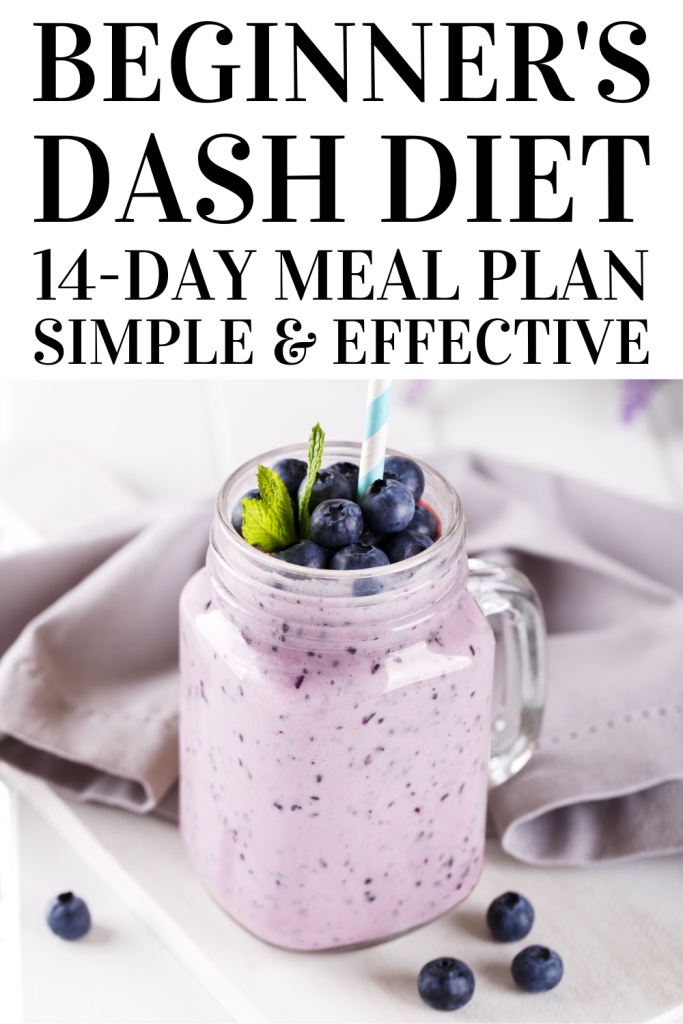
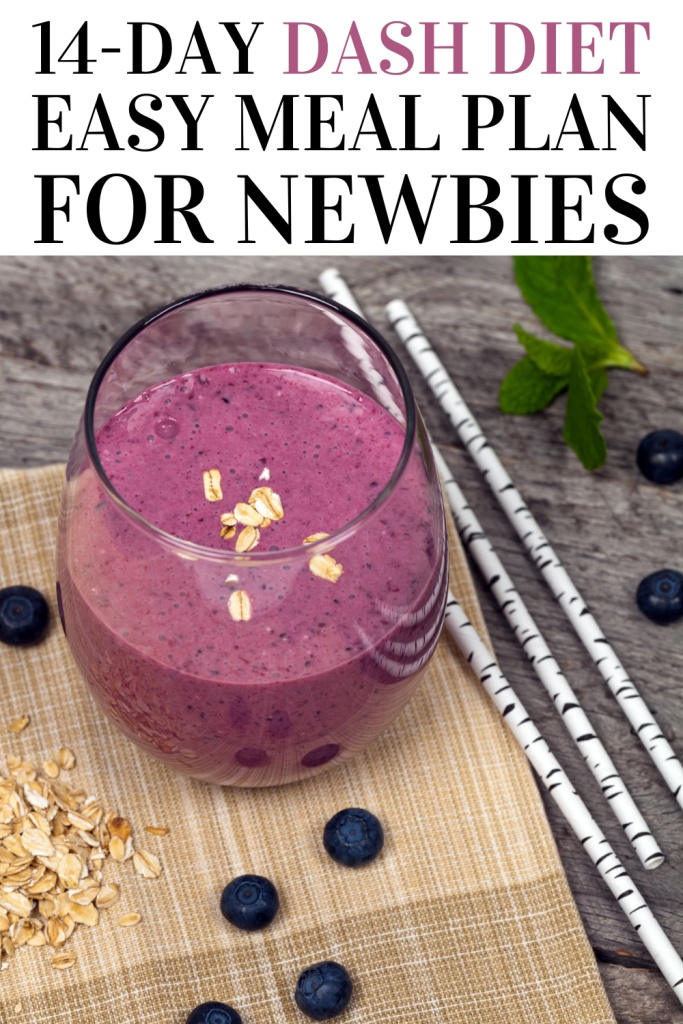
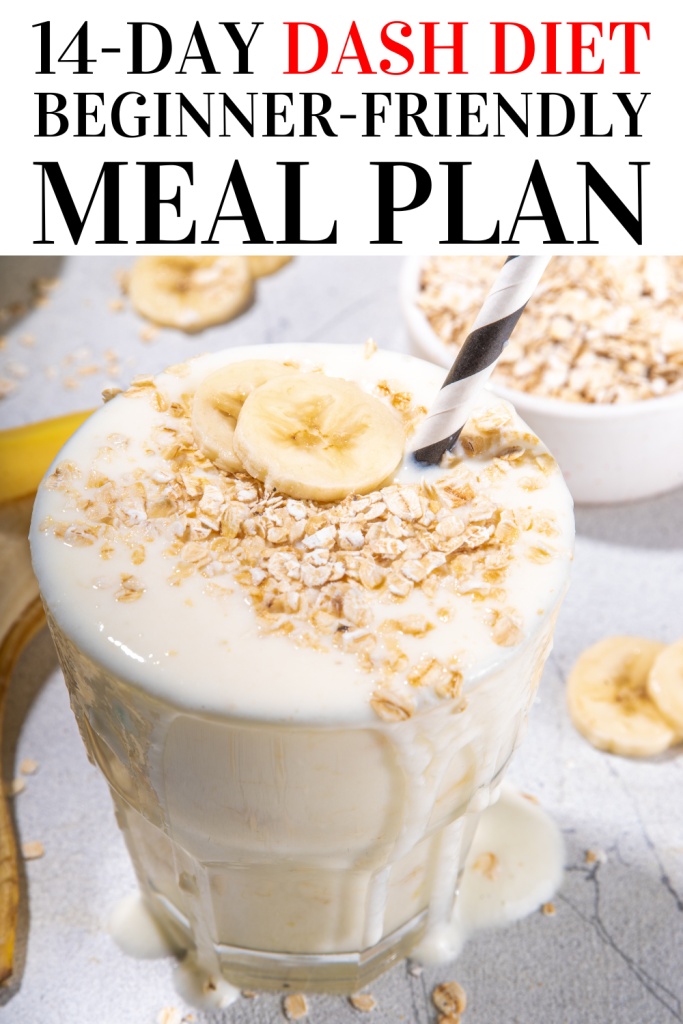
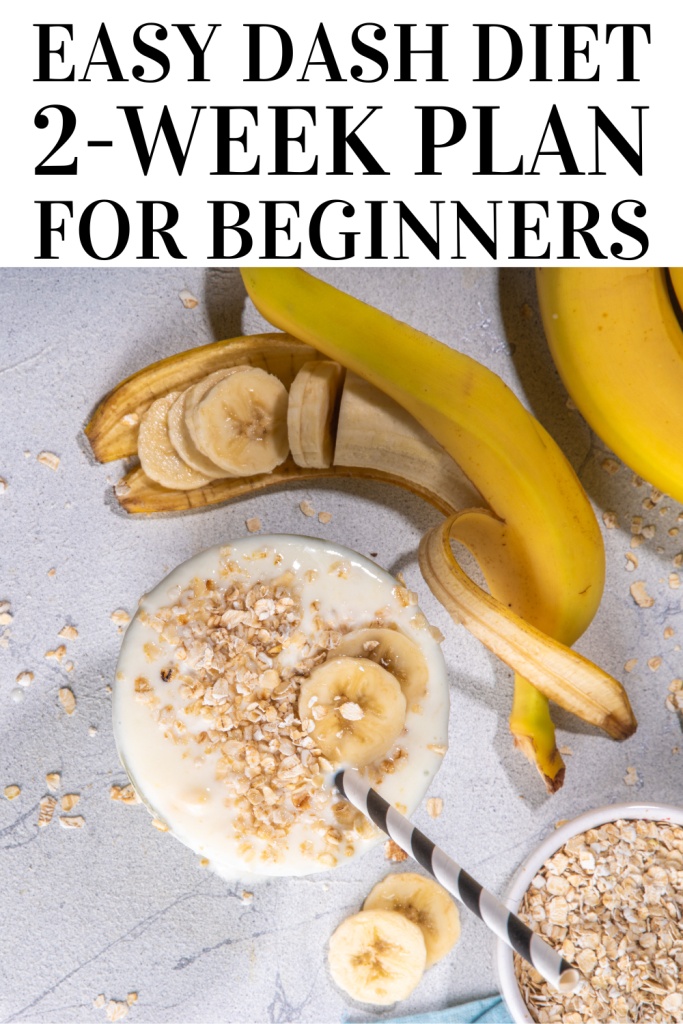
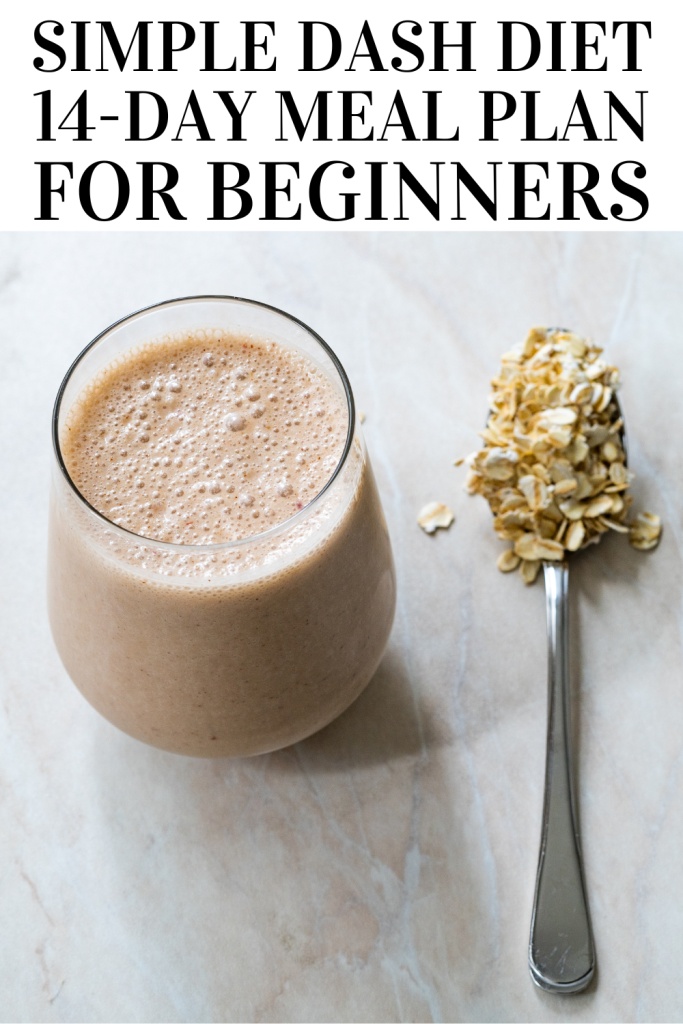




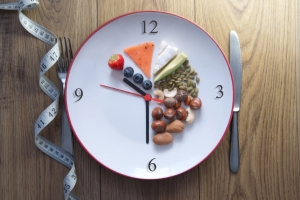


12 Responses
I’m loving the 14-day DASH Diet meal plan! The meals are full of flavor and surprisingly satisfying, which makes sticking to the plan easy and enjoyable. I’ve already started seeing some weight loss and feel healthier overall. The recipes are straightforward and delicious, making it easy to stay on track. If you’re looking for a diet that doesn’t sacrifice taste for results, definitely give this plan a try!
Thank you for your positive feedback! We’re delighted to hear that you’re enjoying the 14-day DASH Diet meal plan and seeing great results. It’s wonderful to know that the meals are both flavorful and satisfying, making your journey towards better health enjoyable. If you have any questions or need additional support as you continue with the plan, please don’t hesitate to reach out. We’re here to help and support you!
I’m traveling for work next week. Any tips for sticking to the DASH diet while on the road?
Hi David, that’s a great question! Traveling can definitely make it more challenging to stick to any eating plan, but it’s not impossible. Here are a few tips for staying DASH-compliant while on the road: Pack some healthy snacks like fruit, nuts, or yogurt. When eating out, look for restaurants that offer grilled or baked dishes, salads with lean protein, and vegetable sides. Don’t be afraid to ask for modifications, like requesting sauces on the side or substituting brown rice for white. You can also check out the menus online beforehand to plan your meals. Most importantly, don’t stress too much about being perfect. Just do your best to make healthy choices whenever possible, and get back on track when you return home.
I’m excited to try this, but I have a family to feed, and they’re not all on board with the DASH diet. Any suggestions for making meals that everyone will enjoy?
Hi Ashley, that’s a common challenge! The good news is that the DASH diet is based on whole, unprocessed foods that are healthy for everyone, not just those looking to lower blood pressure or lose weight. Many of the meals in the plan, like grilled chicken with roasted vegetables or lentil soup, are likely to be crowd-pleasers. You can also make some simple modifications to suit different preferences. For example, you could serve the same protein and vegetables but offer different side dishes, like brown rice for those following DASH and white rice for others. You could also try involving your family in meal planning and cooking to get them more excited about trying new things. Getting your family involved in healthy eating will benefit everyone in the long run!
This sounds really healthy, but I’m a bit worried about the cost. Fresh produce and lean meats can get expensive. Do you have any tips for following the DASH diet without breaking the bank? Also, I’m not a big fan of cooking. Are these meals complicated to make?
Hi Sarah, thanks for your comment! Those are really valid concerns. Eating healthy shouldn’t have to be expensive or time-consuming. Here are a few tips for making the DASH diet budget-friendly and easy to follow:
Buy in season: Fruits and vegetables that are in season are usually cheaper and more flavorful.
Frozen is your friend: Frozen fruits and vegetables are just as nutritious as fresh and often more affordable. They’re also great for meal prepping!
Embrace cheaper protein sources: Beans, lentils, and eggs are excellent sources of protein that won’t break the bank.
Plan your meals: This will help you avoid food waste and impulse purchases at the grocery store.
Cook in bulk: Make larger batches of meals like soups, stews, or chili and freeze the leftovers for quick and easy meals later in the week.
As for the cooking part, most of the meals in the plan are pretty straightforward and don’t require any special skills. Many can be made in 30 minutes or less. I’ve also included some tips for meal prepping to save you time during the week. Don’t worry, you don’t have to be a gourmet chef to follow the DASH diet!
I’m really interested in trying this DASH diet, but I have a family to feed, including a couple of picky eaters. Do you think this meal plan is adaptable for families? I don’t want to be making separate meals for everyone. Any suggestions for making it kid-friendly?
Hi Emily, that’s a great question! The DASH diet is definitely adaptable for families, even with picky eaters. Here are a few ideas:
Focus on familiar foods: Many of the DASH-recommended foods are likely already familiar to your family, like fruits, vegetables, whole-wheat bread, and lean meats.
Get the kids involved: Let your kids help with age-appropriate tasks like washing produce, setting the table, or even choosing recipes. This can make them more interested in trying new foods.
Offer choices: Instead of making separate meals, try offering a variety of DASH-friendly options at each meal. For example, you could serve grilled chicken with a choice of brown rice or whole-wheat pasta and a side of steamed broccoli or a salad.
Make it fun: Get creative with presentation. Cut fruits and vegetables into fun shapes, or serve them with a healthy dip like hummus or yogurt.
Don’t give up: It can take multiple tries for kids (and adults!) to accept new foods. Keep offering a variety of healthy options, and eventually, they may surprise you!
You might also find that many of the recipes are already kid-friendly. Things like turkey chili, veggie burgers, and whole-wheat pasta with marinara sauce are usually a hit with all ages. Remember, the goal is to make healthy eating a family affair.
Hi, I have a question I work evenings from 4pm-2am. How can I make this work for me? My breaks are at 7pm and 10pm. I usually get home around 3am, go to sleep by 5 and wake up no later than 10am. Thanks
Hi Emma, thank you so much for reading and for your great question! Working evening shifts definitely requires some adjustment to standard meal timings, but the DASH diet is wonderfully flexible and can absolutely work for your 4 pm to 2 am schedule. Think of your meals based on your waking/working hours rather than traditional names: your ‘breakfast’ could be your first meal after waking around 10 am, followed by a ‘lunch’ before your shift begins, and then utilize your breaks at 7 pm and 10 pm for a ‘dinner’ and a substantial snack (or vice-versa depending on hunger), ensuring you’re incorporating those DASH-friendly whole foods throughout your active period before you head home around 3 am. The key is focusing on the types of nutritious foods outlined in the plan and fitting them into your day, whenever that may be – you can definitely make this healthy lifestyle fit your routine!